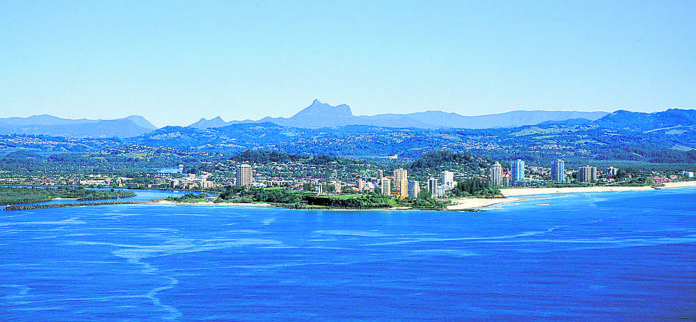THE TWEED property market continues to strengthen whilst profits from sales are reducing nationwide and in neighbouring regional markets.
The Pain and Gain Report released by CoreLogic last month is an in-depth analysis of residential properties which were resold over the September 2016 quarter.
The most recent sale price is compared to the previous sale price in order to determine whether the property sold at a gross profit (gain) or gross loss (pain).
The report provides an estimate of how long a property needs to be held before it makes a profit.
According to the report, throughout Australia houses that resold at a loss were held for 6.1 years and units for 6.5 years.
To make a profit on a house the typical length of ownership is 9.1 years and units is 7.6 years.
The average profit on a resale nationwide was $262,672 while the average loss was $71,529.
“These latest results highlight that ownership of property, whether for investment or owner occupier purposes, should be seen as a long-term investment,” said Cameron Kusher, Corelogic RP Data’s senior research analyst.
Regional NSW best in the country
Within areas of regional NSW such as the Tweed 5.6 per cent of houses and 10.6 per cent of units made a loss in the September quarter.
Regional NSW had the lowest number of house sales making a loss compared to regional areas in other states with 7.8 per cent at a loss in regional Victoria, 16.8 per cent in regional Queensland, 18.4 per cent in regional SA and 29.9 per cent in regional WA.
“In most instances, houses virtually always show a lower proportion of loss-making resales than units,” said Mr Kushner.
“The likely reason for this is that the value of a house is largely derived from the land and its location. Also, typically houses have increased in value at a faster rate than units.”
Regional house sales in NSW had an average hold period of 8.9 years to make a profit with regional NT (7.8 years) and regional Victoria (8.8 years) having shorter hold periods for profit making house sales whilst the regional average was 9.3 years.
Regional NSW performed the best in the country for profit making unit sales at 7.4 years compared to a regional average of 8.3 years.
High demand for Tweed Coast property
Richmond-Tweed was one of only two major coastal regions that recorded a reduction in the number of homes selling at a loss, with the other region being Geelong.
According to the report, “Coastal lifestyle markets are seeing growing popularity, growth in values and in-turn are seeing fewer properties resell for less than their original purchase price.”
In Richmond-Tweed 6.4 per cent of properties sold at a loss which is a reduction from 9.8 per cent in the previous quarter (June 2016).
To the north the Gold Coast saw 11.3 per cent of all properties selling at a loss, down from 13 per cent in the June quarter and its lowest proportion of loss-making resales since May 2010.
Capital city report
Sydney recorded the highest value of profit-making resales in Australia, earning an overall profit of $6.22 billion. The most dramatic change occurred in Perth and Darwin where the instances of loss on resales almost doubled, while Hobart recorded a lower proportion of dwellings resold at a loss.
Adelaide was one of only three capital cities to record a lower loss rate this quarter while Melbourne now has the lowest proportion of loss-making house resales of all capital cities at 2.1 per cent.
In Brisbane, the number of loss-making unit resales was more than double that of houses
Across the individual capital cities, the proportion of loss-making resales over the September 2016 quarter were recorded at:
Sydney 2.3 per cent compared to 1.7 per cent Sept 2015.
Melbourne 4.9 per cent compared to 4.9 per cent Sept 2015.
Brisbane 8.5 per cent compared to 7.3 per cent Sept 2015.
Adelaide 7.2 per cent compared to 9.0 per cent Sept 2015.
Perth 19.6 per cent compared to 10.8 per cent Sept 2015.
Hobart 8.4 per cent compared to 12.0 per cent Sept 2015.
Darwin 30.7 per cent compared to 17.4 per cent Sept 2015.
Canberra 12.2 per cent compared to 11.4 per cent Sept 2015.
